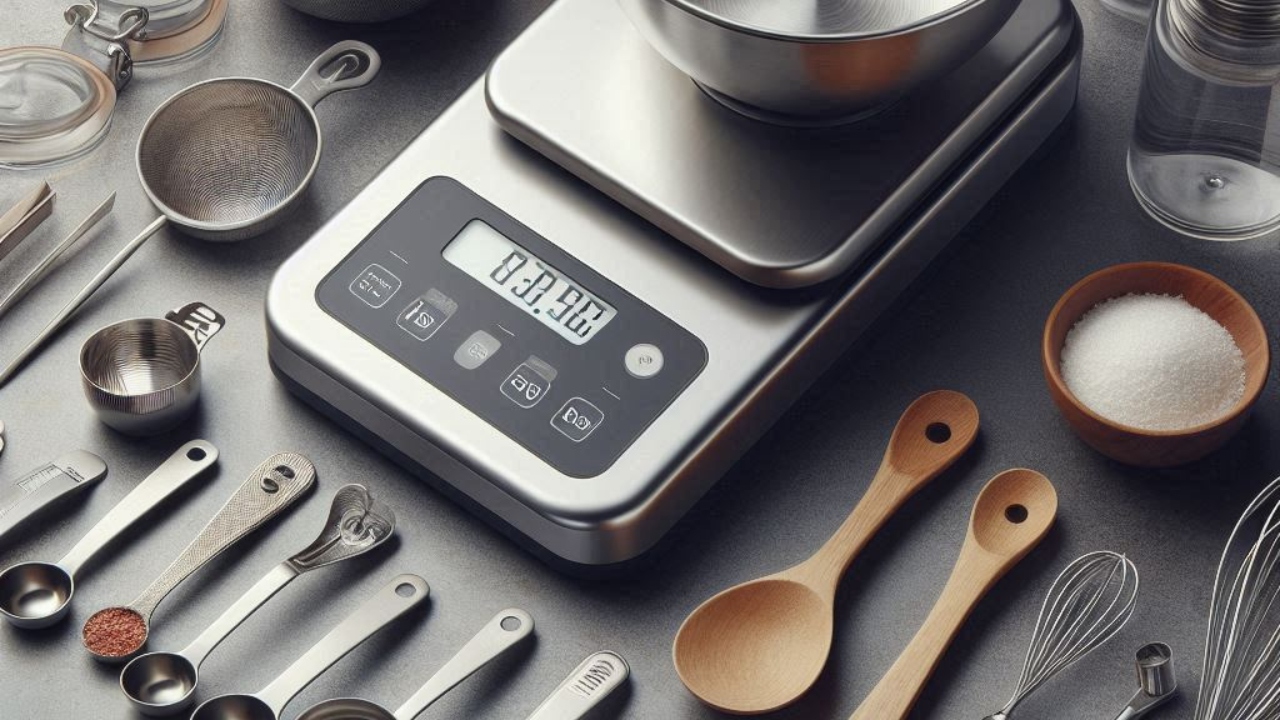Kitchen Measuring Tools
Achieving culinary perfection often hinges on precision, especially when it comes to measuring ingredients. Whether you’re an aspiring baker or a seasoned chef, having the right tools can make all the difference. This guide will focus on three indispensable kitchen measuring tools: measuring cups, measuring spoons, and weighing scales.

Measuring Cups
Measuring cups are vital for accurately measuring both dry and liquid ingredients, ensuring that your recipes turn out just right.
Dry Measuring Cups
Designed specifically for dry ingredients such as flour, sugar, and grains, dry measuring cups come in sets that typically include 1/4 cup, 1/3 cup, 1/2 cup, and 1 cup sizes. They’re usually made from plastic, metal, or ceramic.
How to Use:
-Scoop and Level: When measuring dry ingredients, spoon the ingredient into the cup until it’s overflowing, then level it off with a straight edge, like a knife. This ensures you get an accurate measurement without packing the ingredient down.
Tip: Avoid tapping the cup or packing the ingredient unless the recipe specifically calls for it, as this can lead to excess amounts.
Liquid Measuring Cups
Liquid measuring cups, often made of glass or clear plastic, come with a spout for easy pouring and measurement lines for accuracy. Common sizes include 1-cup, 2-cup, and 4-cup capacities.
How to Use:
– Measure at Eye Level: Place the cup on a flat surface and pour in the liquid. Bend down to check the measurement at eye level to ensure precision.
Tip: For sticky liquids like honey or syrup, lightly coat the inside of the cup with oil or non-stick spray to make pouring easier.
Measuring Spoons
Measuring spoons are essential for small quantities of both dry and liquid ingredients, ensuring that flavors are balanced perfectly in your recipes.
Standard Sets
Measuring spoons usually come in sets, including 1/4 teaspoon, 1/2 teaspoon, 1 teaspoon, and 1 tablespoon sizes. They can be made of metal, plastic, or silicone.
How to Use:
– Scoop and Level for Dry Ingredients: Fill the spoon to the brim and level it off with a straight edge for precise measurement.
– Pour and Check for Liquids: Pour liquid ingredients into the spoon, ensuring they are filled to the top without spilling.
Tip: For small amounts of sticky ingredients, dip the spoon in hot water or lightly coat it with oil for easier release.
Weighing Scales
Kitchen scales provide the most accurate method for measuring ingredients by weight, which is particularly important for baking.
Digital vs. Analog
While analog scales can be useful, digital scales are preferred for their precision and ease of use. They often feature a tare function, allowing you to reset the scale to zero after placing a container on it.
How to Use:
– Tare the Scale: Place your container on the scale and press the tare button to reset the weight to zero before adding your ingredient.
– Measure Carefully: Add the ingredient until you reach the desired weight. Digital scales typically display the weight in grams or ounces.
Tip: Keep your scale on a flat, stable surface and ensure it is properly calibrated according to the manufacturer’s instructions.
Maintenance Tips for Measuring Tools
– Clean Thoroughly: Wash measuring cups, spoons, and scales after each use with warm, soapy water. Dry them completely to avoid residue and potential inaccuracies.
– Check for Wear and Tear: Over time, measurement markings on plastic tools can fade. Replace any tools with illegible markings.
– Calibrate Regularly: For digital scales, follow the manufacturer’s guidelines for calibration to maintain accuracy.
Purchase kit of Kitchen Measuring tools – https://amzn.to/4bNNUCR
Kitchen Equipment’s – Kitchen Equipments I use for making Recipes (aartiatmaram.com)
